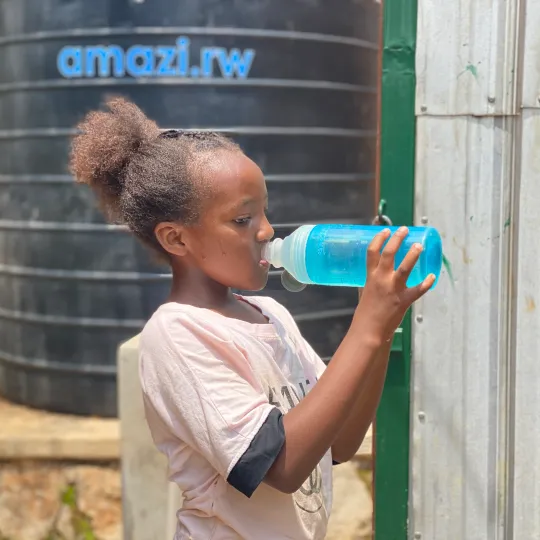
Water Access Rwanda
Our Recommendation
We highly recommend supporting Water Access Rwanda because they consistently measure appropriate outcomes and impact to understand if their work is successful. This page on their website describes a recent impact study.
Water Access Rwanda meets the requirements for 4 of our 4 key criteria:
✔ Understand the Social Issue
✔ Ultimate Outcome Goals (Life Changes)
✔ Evidence of Success
✔ Counterfactual Impact
Their Vision
Mental health issues prevent young people from flourishing. We enable thriving youths by making mental healthcare accessible in underserved regions of the world, starting with Kenya and Africa.
The Problem
Across sub-Saharan Africa, access to clean water remains a systemic barrier to health, productivity, and dignity. Over 386 million Africans still lack basic access to safe water, and 84% of them live in rural areas. Women in these regions lose 200 million hours annually just walking to collect water. In Rwanda specifically, only 1.6% of arable land is irrigated, leaving the vast majority of rainwater underutilized or wasted, even as waterborne diseases remain rampant.
This crisis is not simply a matter of scarcity—it’s a crisis of infrastructure, affordability, and reliability. Even where water sources exist, they are often distant, unsafe, or inaccessible to the poorest. Traditional water interventions have failed to provide sustainable, household-level access. The result: children missing school, families living in perpetual health risk, and communities without the foundation they need to thrive.
The Solution
Water Access Rwanda is pioneering a triple-bottom-line model that delivers safe water at the turn of a tap. Their flagship technology, INUMA™, creates decentralized water mini-grids powered by solar energy, delivering clean water to communities for as little as $11,000 per grid. In just 9 days, a new mini-grid can be deployed, capable of serving up to 1,500 people, meeting WHO standards.
What makes INUMA™ unique is its integration into everyday life. Unlike traditional aid models that depend on donor-funded boreholes or water trucks, INUMA’s system is a scalable, investable infrastructure product. It provides piped water directly to homes and schools, with built-in affordability through custom financing and pay-as-you-go systems.
This approach is complemented by a robust ecosystem of support: water quality testing, WASH training, rainwater harvesting (via Amazi.rw), borehole drilling (Uhira), and community-led monitoring (VOMA). Through this integrated model, WARwanda has established 1,312 water points, created 92 local jobs (50% held by women), and offset 166.5 tons of CO2 through its climate-aligned systems.
A Sample of Their Outputs
- 1,312 active water points in Rwanda serving 176,979 users
- 35 mini-grids installed in 2023 alone, with 64 kW solar capacity
- 865 new connections across households and schools
- 47,958 users with installed rainwater harvesting or purification systems
- 9 new boreholes drilled, with an average setup time of 5.6 days
A Sample of Their Outcomes
- 96.7% of INUMA users walk less than 30 minutes for water, compared to only 40% in non-INUMA areas
- 77% of users express confidence in their water’s safety, vs. widespread distrust elsewhere
- Only 1.6% of users report service disruptions, compared to 53.9% in areas without INUMA
- 47.6% fewer households with INUMA report unaffordable water compared to non-INUMA communities
- 93% of women in VOMA sites report time saved on water collection
A Sample of Their Impact
- 92.8% of INUMA-served households reported no water-related illnesses during the three month study period, compared to 58.9% of non-INUMA households.
- The introduction of INUMA water Mini grids has led to improvements in educational outcomes, fundamentally transforming learning environments across served communities. Communities with INUMA access have higher rates of academic improvement, with an 69.2% of respondents reporting positive changes in examination performance of school going children. Within this group, 37.4% noted significant improvements, while 31.8% observed modest enhancements. These findings stand in sharp relief against non-INUMA communities, where merely 51.8% reported similar improvements.




